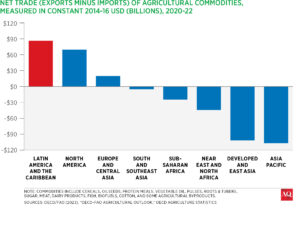This article is adapted from AQ’s special report on food security in Latin America
Today’s Latin America is truly becoming the world’s breadbasket: the source of more than 60% of the planet’s soy, a quarter of its beef and chicken, and so on. But paradoxically, even as exports soar, the region faces serious challenges feeding its own population. Nearly 30% of Latin Americans are estimated to suffer from food insecurity—an increase of six percentage points from a decade ago.
This “food paradox,” as the award-winning journalist John Otis calls it in this issue’s cover story, is clearly unsustainable. Hunger is a major factor driving the region’s unprecedented levels of migration, and a source of political tension as well. Latin America’s future lies in addressing both challenges: becoming a more efficient producer and exporter of food while ensuring its own citizens don’t go hungry.
The good news is that many organizations, governments and companies are working to address the challenge—often in innovative fashion, as the reporting in this issue shows. Food banks in Argentina are working to reduce wasted produce, farmers in Mexico are rediscovering old growing techniques, and sugarcane workers in the Dominican Republic, many of them the children of Haitian migrants, are getting better access to nutritious food. As Brandee McHale of the Citi Foundation notes in this issue, structural changes such as shortening supply chains for food can also help provide supply while also creating more local jobs.
Such projects aren’t enough, of course. Stronger economic growth would create higher-quality jobs, and some governments also should pay more than lip service to the challenges posed by hunger by, for example, using tools like tax policy. The private sector can also play a role, helping create financing opportunities for quality projects, and providing an upward ladder for social mobility. A better breadbasket is within reach—but it will require commitment, focus and a broad coalition.











